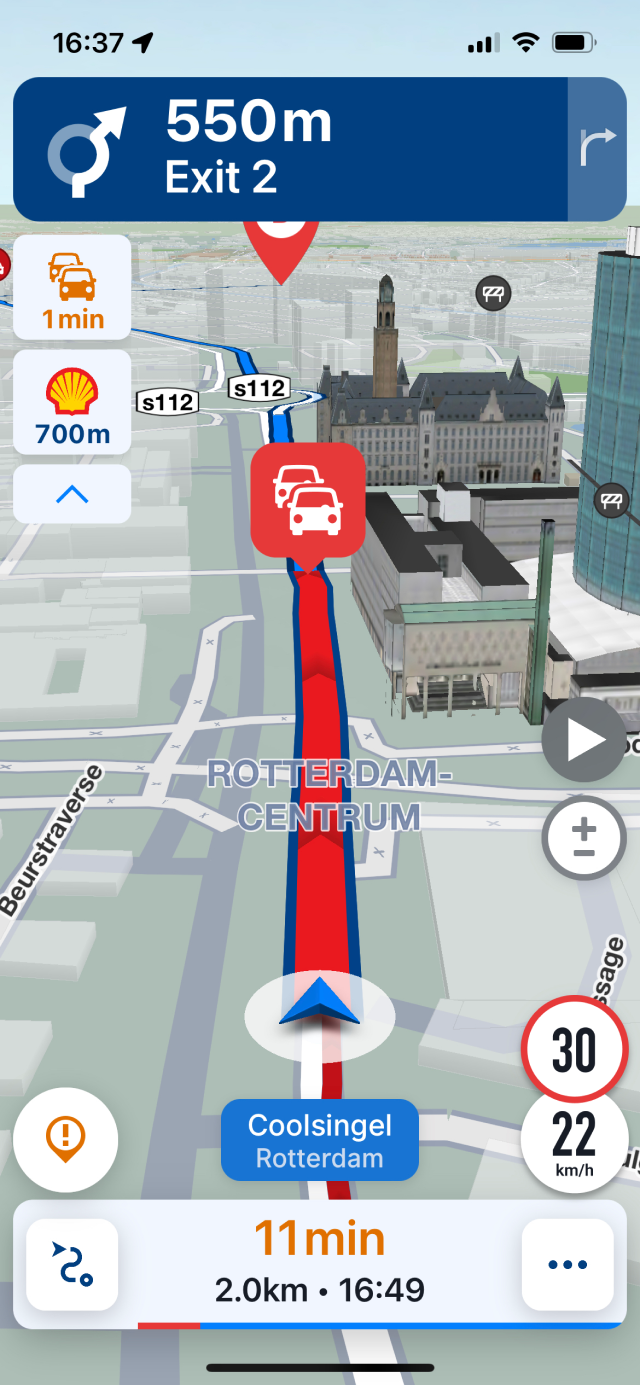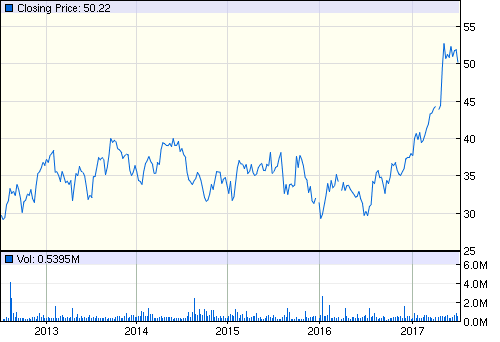How Middle Management Drives Productivity And Employee Engagement

Table of Contents
Fostering a Culture of Collaboration and Communication
Effective communication and collaboration are the cornerstones of a productive and engaged workforce. Middle management plays a crucial role in establishing and maintaining these vital elements. Open communication breeds trust, transparency, and a sense of shared purpose, leading to improved team performance and higher productivity.
Open Communication Channels
Creating open communication channels is paramount. This involves implementing strategies that ensure information flows freely and efficiently throughout the team.
- Regular Team Meetings: Schedule consistent meetings to discuss progress, address challenges, and solicit feedback.
- Transparent Feedback Systems: Implement systems for providing and receiving regular feedback – both positive reinforcement and constructive criticism. Make feedback a two-way street.
- Accessible Communication Tools: Utilize tools like Slack, Microsoft Teams, or other platforms to facilitate easy and instant communication.
Effective communication techniques are also essential:
- Active Listening: Truly hearing and understanding employee concerns and perspectives.
- Clear Instructions: Providing unambiguous directions and expectations for tasks.
- Regular Updates: Keeping employees informed about project progress, organizational changes, and relevant information.
Open communication directly impacts employee morale and productivity. When employees feel heard and informed, they are more likely to be engaged and invested in their work.
Building Strong Team Dynamics
Middle management is responsible for cultivating strong team dynamics. This involves actively fostering a positive and collaborative environment.
- Team-Building Activities: Organize activities that encourage interaction, build relationships, and strengthen teamwork. These can range from informal social gatherings to structured problem-solving exercises.
- Conflict Resolution: Equip your team with the skills and strategies to navigate disagreements constructively. Act as a mediator when necessary, fostering respectful communication and finding mutually acceptable solutions.
- Supportive Work Environment: Create a culture of mutual respect, psychological safety, and inclusion where every team member feels valued and supported.
A positive and inclusive team environment leads to increased collaboration, reduced conflict, and improved overall team performance.
Empowering Employees and Promoting Ownership
Empowered employees are engaged employees. Middle management plays a crucial role in fostering a sense of ownership and responsibility within the team.
Delegating Effectively
Effective delegation is a cornerstone of empowerment. It involves entrusting team members with tasks and responsibilities, allowing them to develop their skills and take ownership of their work.
- Clearly Define Tasks: Ensure tasks are well-defined, with clear expectations and deadlines.
- Provide Necessary Resources: Equip employees with the tools, information, and support they need to succeed.
- Set Realistic Expectations: Avoid overwhelming employees with unrealistic workloads or overly ambitious deadlines.
Avoid micromanagement. Trust your team members to complete their tasks effectively. Effective delegation fosters employee growth and significantly boosts productivity.
Providing Meaningful Feedback and Recognition
Regular feedback, both positive and constructive, is essential for employee growth and motivation. Recognition and rewards further reinforce positive behaviors and boost employee engagement.
- Constructive Feedback: Provide specific, actionable feedback that focuses on performance improvement.
- Positive Reinforcement: Acknowledge and appreciate employees' accomplishments and contributions.
- Recognition Programs: Implement formal or informal recognition programs to celebrate successes and reward outstanding performance.
Meaningful feedback and recognition demonstrate appreciation and improve employee performance by guiding development and reinforcing positive behaviors, leading to improved productivity and retention.
Setting Clear Goals and Providing Support
Clear goal setting and ongoing support are crucial for driving team performance. Middle management is responsible for establishing and communicating these elements effectively.
Goal Setting and Alignment
Goals should be SMART: Specific, Measurable, Achievable, Relevant, and Time-bound. They must also align with overall organizational objectives.
- Communicate Goals Clearly: Ensure that all team members understand the goals and their individual roles in achieving them.
- Regular Progress Reviews: Track progress regularly and make adjustments as needed.
- Collaborative Goal Setting: Involve team members in the goal-setting process to foster ownership and commitment.
Clear goal setting reduces confusion and improves focus, leading to enhanced productivity.
Providing Necessary Resources and Mentorship
Middle management must provide employees with the resources, training, and mentorship they need to succeed.
- Necessary Resources: Provide access to the tools, technology, and information employees need.
- Training Programs: Invest in training programs to develop employee skills and knowledge.
- Mentorship Opportunities: Pair experienced employees with newer team members to provide guidance and support.
Providing support enhances employee confidence and performance, ultimately increasing productivity and employee engagement.
Conclusion: The Key Role of Middle Management in Driving Productivity and Engagement
In conclusion, effective middle management is critical for driving productivity and employee engagement. By fostering a culture of collaboration and communication, empowering employees, and setting clear goals with ongoing support, middle management can unlock the full potential of their teams. By implementing these strategies for effective middle management, you can unlock your team's full potential and achieve unprecedented levels of productivity and employee engagement. Focus on improving your middle management practices today to transform your organization's performance.

Featured Posts
-
 Mia Farrow Visits Sadie Sink Backstage A Broadway Encounter
May 25, 2025
Mia Farrow Visits Sadie Sink Backstage A Broadway Encounter
May 25, 2025 -
 M56 Motorway Accident Real Time Traffic Information And Route Updates
May 25, 2025
M56 Motorway Accident Real Time Traffic Information And Route Updates
May 25, 2025 -
 Import Export Usa Impatto Dei Dazi Sui Prezzi Dell Abbigliamento
May 25, 2025
Import Export Usa Impatto Dei Dazi Sui Prezzi Dell Abbigliamento
May 25, 2025 -
 Disappointing Q1 Results Send Lvmh Shares Down 8 2
May 25, 2025
Disappointing Q1 Results Send Lvmh Shares Down 8 2
May 25, 2025 -
 Auto Tariff Relief Hopes Lift European Shares Lvmh Slumps
May 25, 2025
Auto Tariff Relief Hopes Lift European Shares Lvmh Slumps
May 25, 2025
Latest Posts
-
 B C Billionaires Bid For Hudsons Bay Leases Impact On Retail Landscape
May 25, 2025
B C Billionaires Bid For Hudsons Bay Leases Impact On Retail Landscape
May 25, 2025 -
 Global Trade Tensions G7 Ministers Statement Omits Tariff Concerns
May 25, 2025
Global Trade Tensions G7 Ministers Statement Omits Tariff Concerns
May 25, 2025 -
 B C Billionaire Targets Hudsons Bay Leases For New Shopping Mall
May 25, 2025
B C Billionaire Targets Hudsons Bay Leases For New Shopping Mall
May 25, 2025 -
 Office365 Security Breach Leads To Multi Million Dollar Loss For Executives
May 25, 2025
Office365 Security Breach Leads To Multi Million Dollar Loss For Executives
May 25, 2025 -
 Federal Charges Individual Accused Of Millions In Office365 Executive Account Breach
May 25, 2025
Federal Charges Individual Accused Of Millions In Office365 Executive Account Breach
May 25, 2025
